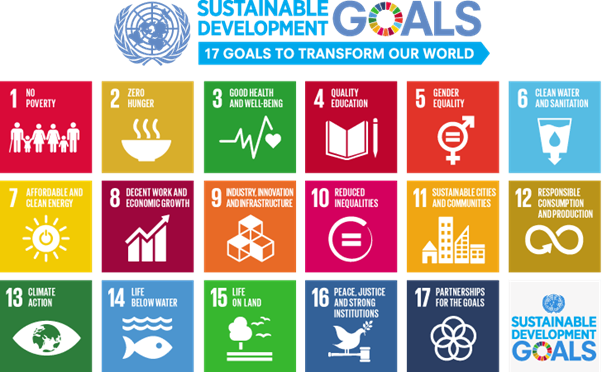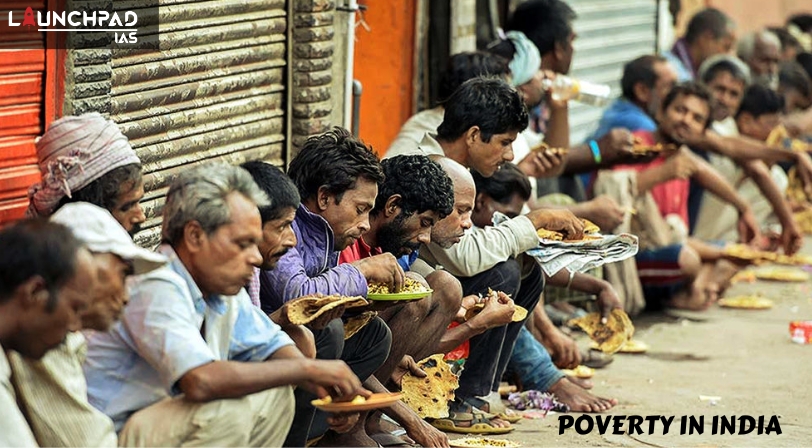What is Poverty?
- Poverty is a state or condition in which a person or community lacks the financial resources and essentials for a minimum standard of living. Poverty means that the income level from employment is so low that basic human needs can’t be met.
- According to the World Bank, Poverty is a pronounced deprivation in well-being and comprises many dimensions. It includes low incomes and the inability to acquire the basic goods and services necessary for survival with dignity. Poverty also encompasses low levels of health and education, poor access to clean water and sanitation, inadequate physical security, lack of voice, and insufficient capacity and opportunity to better one’s life.
- In India, 21.9% of the population lives below the national poverty line in 2011.
Types of Poverty:
There are two main classifications of poverty:
- Absolute Poverty: A condition where household income is below a necessary level to maintain basic living standards (food, shelter, housing). This condition makes it possible to compare different countries and also over time.
It was first introduced in 1990, the “dollar a day” poverty line measured absolute poverty by the standards of the world’s poorest countries. In October 2015, the World Bank reset it to $1.90 a day. - Relative Poverty: It is defined from the social perspective as the living standard compared to the economic standards of the population living in the surroundings. Hence it is a measure of income inequality.
Usually, relative poverty is measured as the percentage of the population with income less than some fixed proportion of median income.
How Poverty is measured?
- The Poverty in India is measured based on the poverty line quantified in terms of per capita consumption expenditure
- Data is obtained from the large sample survey of consumer expenditure data of the National Sample Survey Office (NSSO).
- Households with consumption expenditures below the poverty line are said to be “Below the Poverty Line (BPL)” and deemed to be poor.
Causes of Poverty
- Lack of good jobs/job growth – In India, over 90% population is employed in the informal sector. Also, according to the recent Periodic Labour Force Survey (PLFS) for 2020-21 released by the Ministry of Statistics and Programme Implementation, the unemployment rate in India is 4.2%
- Lack of Education – Poverty in India is a vicious cycle and without education, people aren’t able to improve their situations. According to UNESCO, over 170 million people could be free of extreme poverty if they only had basic reading skills. UNESCO Global Education Monitoring Report
- Lack of good healthcare – Poor People are more likely to suffer from bad health, and those with bad health are more likely to be poor. This is because healthcare is often too expensive or inaccessible to those who need it. Without money for medicine and treatment, the poor have to make really tough decisions, and usually, essentials like food take priority. People who are sick get sicker, and then they can’t work, which makes the situation even more dire. If people do seek treatment, the cost often ruins their finances. It’s a vicious cycle.
- Warfare/conflict – Eg. Poverty in Iraq, Syria, Afghanistan, etc.
- Weather/climate change – According to the World Bank, climate change has the power to impoverish 100 million people in the next decade or so. We know climate change causes drought, floods, and severe storms, and that can take down successful countries while pulling poor ones down even further. Recovering is extremely difficult, as well, especially for agricultural communities where they barely have enough to feed themselves, let alone prepare for the next harvest year.
- Population Explosion – Increases the demand for consumption goods tremendously.
- Inefficient Resource Utilisation – E.g. underemployment and disguised unemployment in the country, particularly in the farming sector.
- Social injustice – Social injustice such as gender discrimination, racism, or other forms and poverty are directly correlated. Social injustice leads to Poverty and poverty leads to injustice (vicious cycle). People who are victims of social injustice struggle with getting a good education, the right job opportunities, and access to resources that can lift them out of poverty.
- Low Rate of Economic Development clubbed with inflation.
- Historical factors – E.g. In India, poverty is prevalent due to the systematic loot of Indian resources by Britishers for 150+ years
- Political unwillingness-Poverty elevation programs are not given high priority by govt.
- Issues in governance – Problems in the implementation of programs and policies, corruption, etc
Sustainable development Goal 1: No poverty
- The fact that global poverty is decreasing is of little comfort, as there is a slowing in the reduction of extreme poverty.
- In 2015, nearly 10% of the population lived in poverty. Even with declining poverty rates, it is estimated that nearly 6% of the world’s population will be impoverished in 2030.
- Poverty persists as a result of acute deprivation, exclusionary processes exacerbated by natural disasters.
- Social protection systems help by alleviating distress and creating conditions for people to escape poverty, but they frequently do not reach all intended people or are insufficient to meet the goals.
- Even having a job, for example, could not help 8 percent of the world’s workers escape extreme poverty in 2018.
- Only 22% of unemployed people receive unemployment benefits, 28% of severely disabled people receive disability benefits, and only 41% of new mothers receive maternity benefits.
- Natural disasters, on the other hand, are causing deaths and economic losses in many countries, frequently reversing poverty escapes by vulnerable groups.



